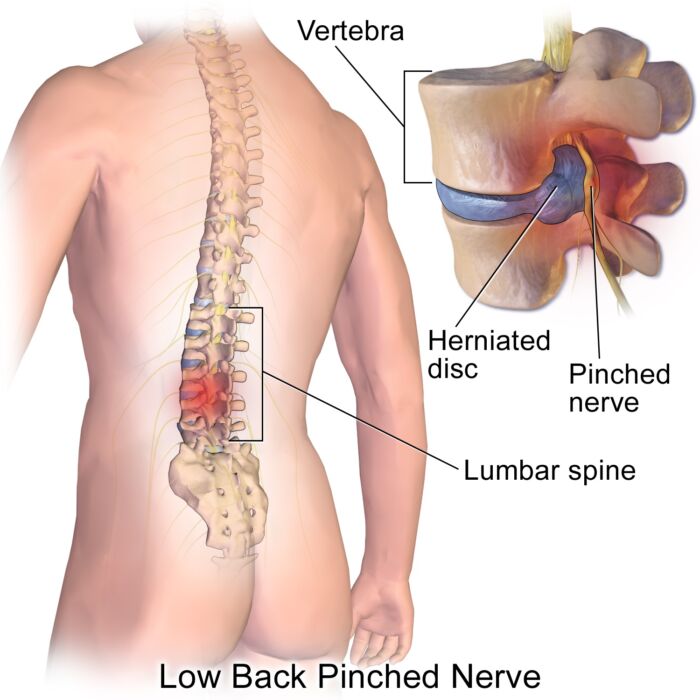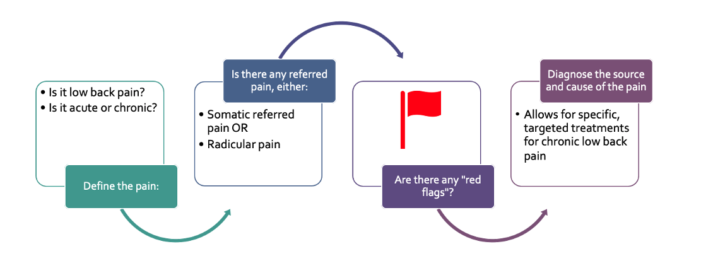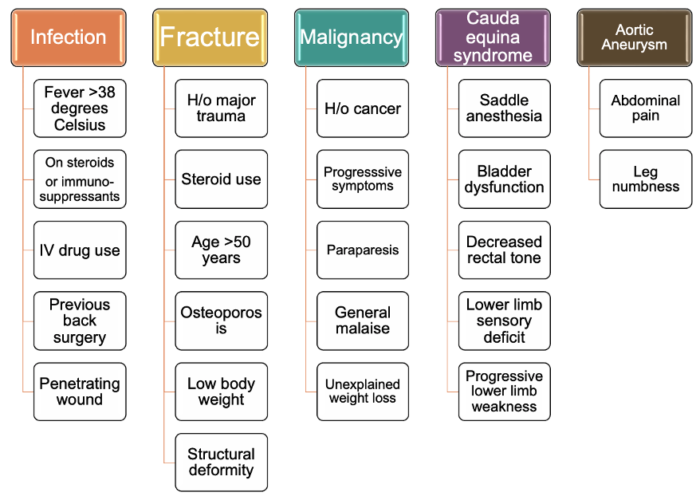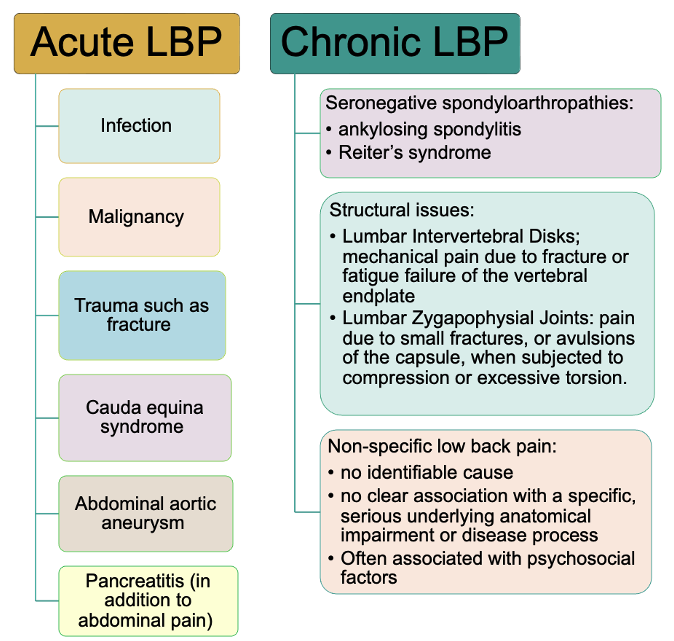Copy link
Low Back Pain: Etiologies
Last updated: 01/16/2024
Key Points
- Low back pain is synonymous with lumbar spinal pain and can be either acute or chronic (once pain has persisted beyond 3 months).
- Low back pain may be associated with radiation of pain including somatic referred pain or radicular pain.
- Assessment of a patient presenting with low back pain must include evaluation of red flags in order to avoid missing rare, yet catastrophic etiologies.
- Majority of low back pain is nonspecific without a clear organic cause.
Definition
- Low back pain is the leading cause of disability worldwide. Low back pain is synonymous with lumbar spinal pain. It may be either acute or chronic, with chronic low back pain being defined as pain persisting for longer than 3 months.
- Low back pain is perceived in in the area bounded by:1
- the lateral margins of the erector spinae muscles;
- an imaginary transverse line through the tip of the last thoracic spinous process, and;
- an imaginary transverse line through the tip of the first sacral spinous process (Figure 1).

Figure 1. Anatomical location of low back pain; Source: Wikimedia. Blausen.com staff (2014). Medical gallery of Blausen Medical 2014. Link
- Although low back pain is defined as the perception of pain in that region, it may also be associated with radiation of pain to distance regions. The emphasis is on where the pain is perceived or where it appears to start.
Assessment
- Low back pain is the most common pain complaint in patients presenting to healthcare professionals and requires a stepwise assessment that allows for exclusion of acute issues followed by further assessment for chronic conditions that may be complex and have a psychosocial component (Figure 2).

Figure 2. Assessment of a patient with low back pain
- It is crucial to assess for red flags in a patient presenting with acute low back pain, in order to avoid delayed treatment of potentially catastrophic etiologies. Although these clinical scenarios are quite rare, it is pertinent to rule out serious pathologies (Figure 3). If no “red flags” are detected, the practitioner can be reasonably confident that a serious condition is not the cause of pain and can formulate a provisional diagnosis. The prevalence of pathological, serious causes of back pain in primary care can be estimated to be no more than 5%.

Figure 3. Red flags in a patient presenting with new onset low back pain2
Etiologies
- Low back pain is not a specific disease; it is a symptom that may be due to a long list of differential diagnoses with a wide range of pathology, from benign to catastrophic.
- Classification of low back pain varies across locations and between specialties. Most will agree that differentiating low back pain based on persistence of pain, that is, acute versus chronic, is acceptable (Figure 4). In the majority of cases, it may not be possible to identify the actual cause of back pain, and the use of diagnostic nerve blocks can aid with assessment and diagnosis.
- Nomenclature of low back pain that addresses the underlying cause varies broadly among health practitioners. The International Association for the Study of Pain has released a new classification for chronic pain, and chronic low back pain could be defined as a chronic secondary musculoskeletal pain, regardless of whether or not an underlying cause has been confirmed.4

Figure 4. Etiology of low back pain3
References
- King W, Bogduk N. Chronic low back pain. In: Fishman S, Ballantyne J, Rathmell J. Bonica’s Management of Pain (5th edition). Philadelphia, PA; Lippincott Williams & Wilkins; 2019: 1259-82.
- Verhagen AP, Downie A, Popal N, et al. Red flags presented in current low back pain guidelines: A review. Eur Spine J. 2016;25(9):2788-802. PubMed
- O'Connell NE, Cook CE, Wand BM, et al. Clinical guidelines for low back pain: a critical review of consensus and inconsistencies across three major guidelines. Best Pract Res Clin Rheumatol. 2016;30(6):968-80. PubMed
- Treede RD, Rief W, Barke A, et al. A classification of chronic pain for ICD-11. Pain. 2015;156(6):1003-7. PubMed
Copyright Information

This work is licensed under a Creative Commons Attribution-NonCommercial-NoDerivatives 4.0 International License.